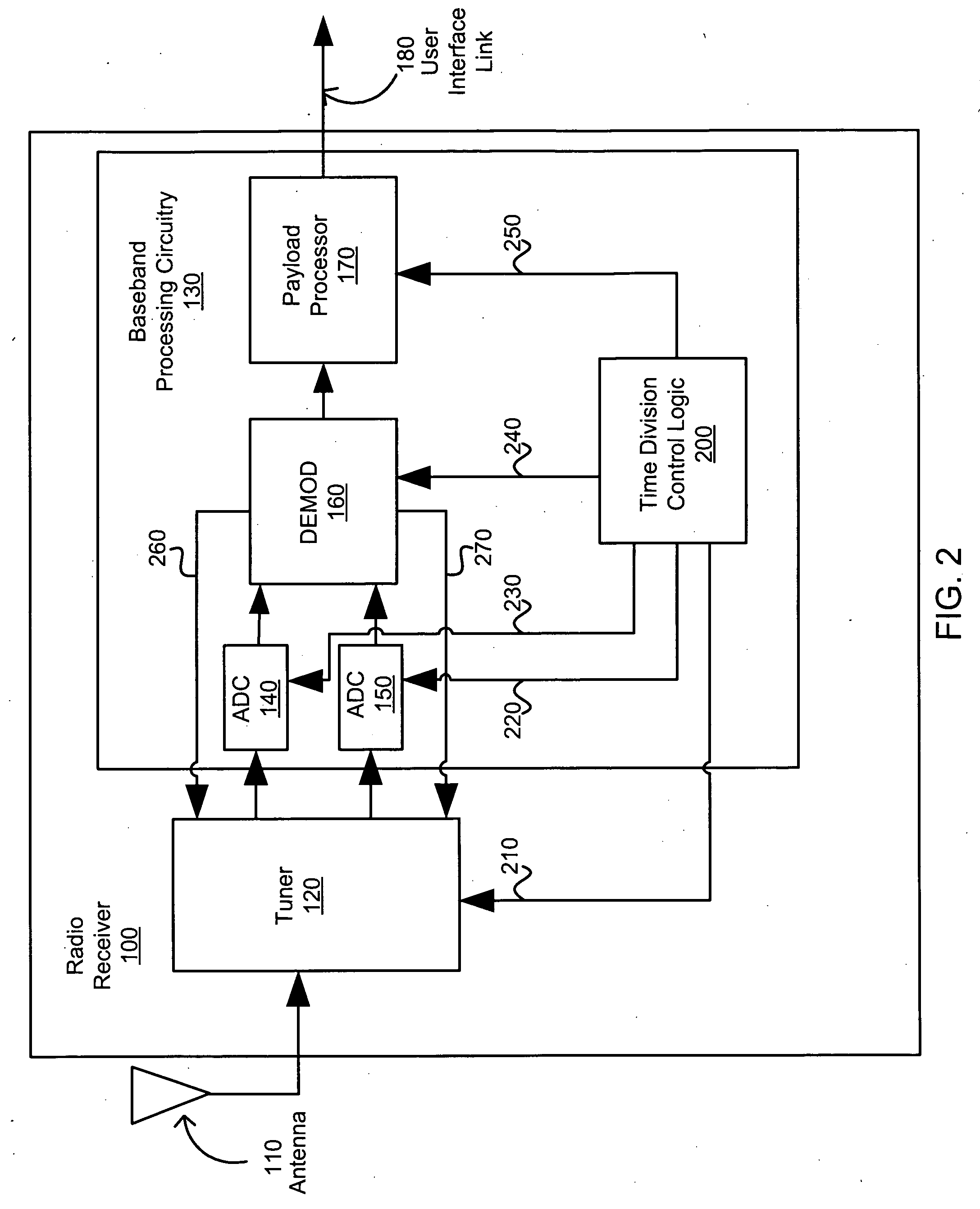Low power digital media broadcast receiver with time division
a digital media and receiver technology, applied in the field of low-power digital media broadcast receivers with time division, can solve the problems of coarse control and is not amenable to dab/t-dmb receivers, and achieve the effect of significant power savings and amenability for portable applications
- Summary
- Abstract
- Description
- Claims
- Application Information
AI Technical Summary
Benefits of technology
Problems solved by technology
Method used
Image
Examples
Embodiment Construction
[0026] The Eureka DAB and T-DMB specification can offer near CD-quality sound, more stations, additional radio and data services, a wider choice of programs, ease of tuning, and interference-free reception. To take benefit of frequency diversity, the DAB and T-DMB systems can use a wide radio frequency (RF) channel of 1.536 MHz able to provide up to 1.824 kbps useful capacity. A user may receive one or more services over a receiver device configured with the Eureka DAB and / or T-DMB specification. A service within the DAB channel may be single audio stream, video stream, or data stream. A typical service uses 64 kbps to 384 kbps. Therefore, many services can be brought together into one DAB channel. Each service can be error protected and then split into small data units called capacity units. These capacity units can then be multiplexed together to form a single DAB frame. The DAB frame can then be split into bit pairs and modulated onto many orthogonal carriers. Each service may no...
PUM
 Login to View More
Login to View More Abstract
Description
Claims
Application Information
 Login to View More
Login to View More - R&D
- Intellectual Property
- Life Sciences
- Materials
- Tech Scout
- Unparalleled Data Quality
- Higher Quality Content
- 60% Fewer Hallucinations
Browse by: Latest US Patents, China's latest patents, Technical Efficacy Thesaurus, Application Domain, Technology Topic, Popular Technical Reports.
© 2025 PatSnap. All rights reserved.Legal|Privacy policy|Modern Slavery Act Transparency Statement|Sitemap|About US| Contact US: help@patsnap.com



